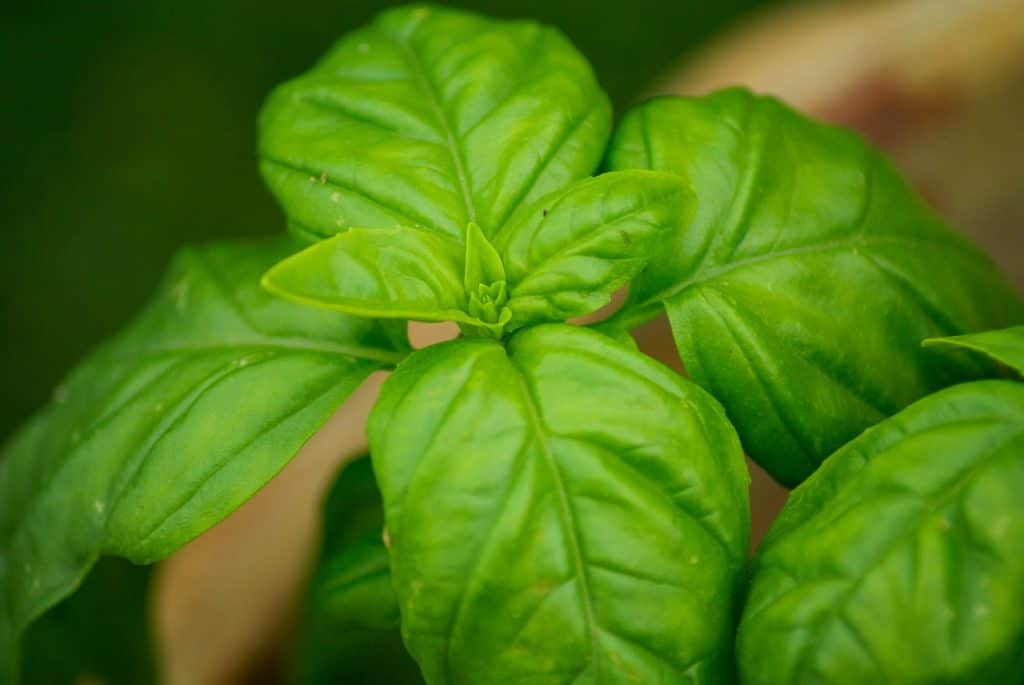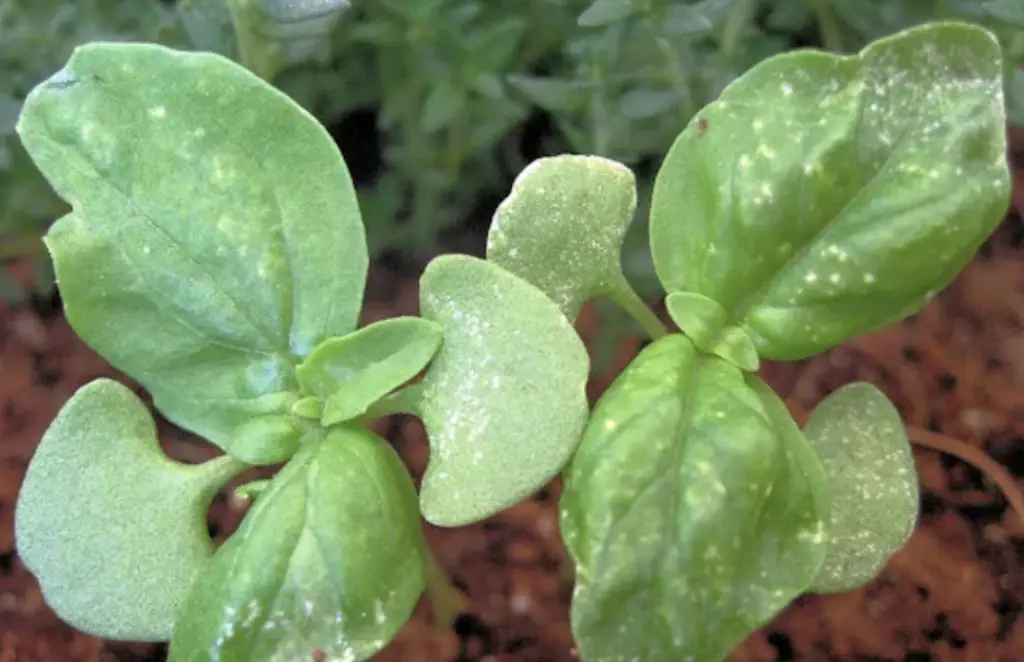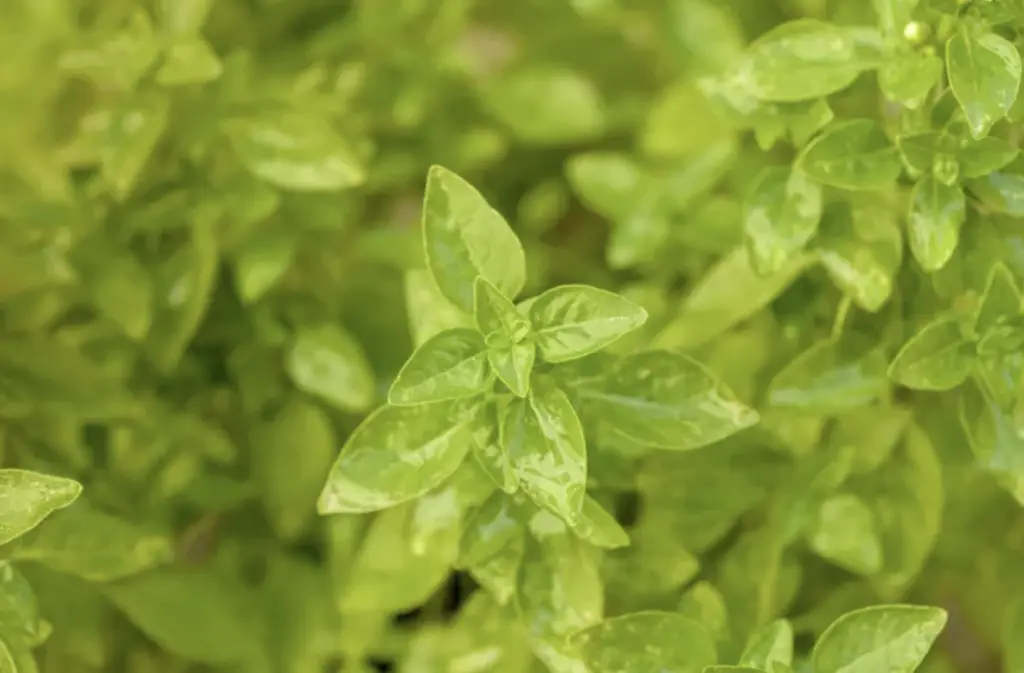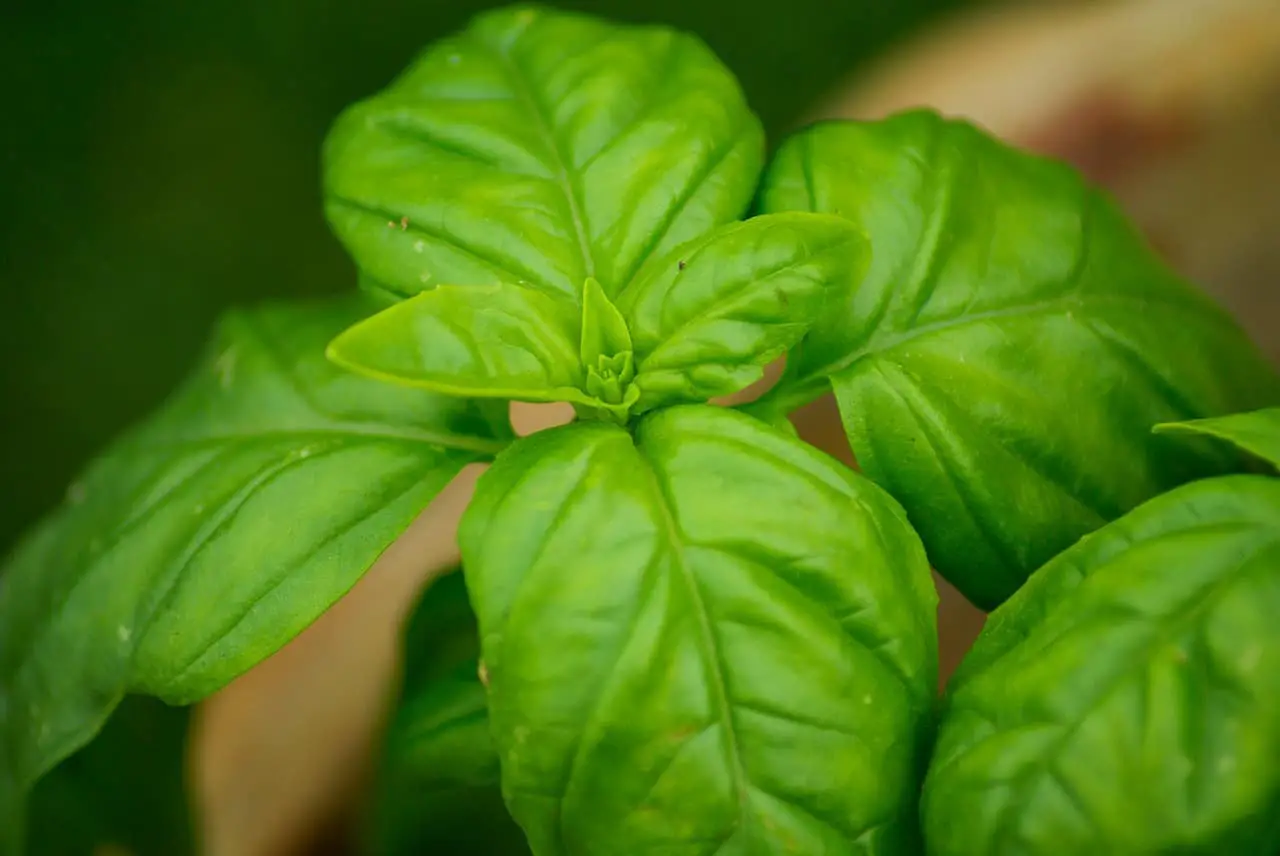
Basil is a fantastic plant to have at home, it tends to be quite easy to grow, but without the proper care and attention, some problems can arise. White spots on basil leaves, along with yellowing leaves and black spots, could indicate various issues like fungal infections, pests, or nutrient deficiencies. Addressing these issues promptly with appropriate treatments such as neem oil for pests or adjusting watering and fertilizing practices can help restore basil’s health.
White Spots On Basil Leaves
The biggest difference between insects and fungal diseases is the way they grow on the plant. The powdery mildew which is the name of the common fungal disease will have a pattern to it almost. White and almost look fussy. As soon as you see that you need to pick away the leaves affected and prey it hasn’t got to any else. It goes without saying that unfortunately, you should not be eating any of the plants that have been affected with powdery mildew. You might wonder what the reason is for its development. The most common reason is that the days during the season are very warm and the nights are very cool. This contrast in temperatures creates the perfect environment for powdery mildew.
What Causes White Spots On Basil Plants
The white spots that are starting to develop on your basil will really come down to two main reasons. It can for one be a fungal disease or it can be an insect infestation. Both of these are very harmful for the plant and you should deal with it as soon as you see it. Your basil plant will have a lot of different insects that will want to feed on it, so keeping it a healthy plant is very important. Some of the insects that like to feed on basil include aphids, thrips, leafhoppers, spider mites, whiteflies and lastly we have mealybugs. Quite a few different ones.
Are White Spots On Basil Safe To Eat
It’s not recommended to eat any leaves that have been attacked by either insects or fungal diseases and pests. It will most certainly not have a good impact on your health. Instead, pick leaves that are healthy and have no visible spots on them if you want to use them for cooking. I want to reiterate again now what we have been talking about. White spots are in most cases caused by the affliction of fungal disease. You then need to pick these leaves quickly to avoid further development. Insect attacks will usually show as a more brown-green color and very irregularly shaped. Maybe you have heard people talking about smoking basil and the benefits of that. We have actually written an article that is dedicated to this exact topic, you can find it here, Can You Smoke Basil?
White Powder On Plant
If you notice a white powdery substance on your plants, it is likely powdery mildew. Powdery mildew is a fungal disease that affects a wide range of plants, including basil. Powdery mildew typically appears as a white or grayish powdery coating on the leaves stems, and flowers of plants. It can also cause leaves to become distorted or discolored, and in severe cases, the plant may stop growing and die. To treat powdery mildew on basil plants, remove any affected plant material immediately and dispose of it in the trash (not compost). Then, spray the remaining plant with a fungicide, being sure to follow the instructions on the label carefully. To prevent powdery mildew from spreading to your basil plants, make sure to provide adequate air circulation and avoid overcrowding. Additionally, avoid overhead watering and instead water your basil at the base of the plant to prevent the leaves from becoming wet and susceptible to fungal diseases.
White Fuzz On Plants
White fuzz on plants can be a sign of powdery mildew, a fungal disease that affects a wide range of plants including basil, roses, cucumbers, and squash. Powdery mildew appears as a white or grayish powdery coating on the leaves, stems, and flowers of plants, and can cause stunted growth, yellowing, and premature leaf drop. It thrives in warm, humid conditions and can spread quickly from plant to plant. There are also a number of natural remedies for powdery mildew, such as spraying the affected plant with a solution of baking soda and water, neem oil, or a mixture of milk and water. These treatments can help to kill the fungus and prevent it from spreading, but it is important to reapply them regularly to keep the powdery mildew under control.

Yellowing Basil Leaves
Yellowing basil leaves may signal various issues, including overwatering, nutrient deficiencies, or pests. Ensure proper drainage to prevent waterlogging, maintain balanced soil nutrients, and regularly inspect plants for pests. Pruning affected leaves and addressing underlying issues promptly can help restore basil leaf health.
If Your Basil Leaves Are Turning Yellow
Observing yellowing basil leaves can be disconcerting, but it’s often a sign of underlying stress. Assess factors like watering frequency, soil nutrition, and sunlight exposure. Adjust watering to avoid over-saturation, ensure balanced nutrient levels in the soil, and provide adequate sunlight. Prune yellowed leaves to promote new growth and address any potential issues promptly to restore your basil’s vibrancy.
Why Is My Basil Wilting
If your basil is wilting, several factors may be at play. Check soil moisture levels—over or under-watering can cause wilting. Ensure proper drainage and water consistently. Assess sunlight exposure—basil thrives in full sun. Monitor for pests and diseases, addressing any issues promptly. Prune damaged or wilted leaves to encourage new growth. With proper care, your basil should regain its vitality in no time.
Common Causes for Yellowing Basil Leaves
Below are seven common reasons why basil leaves may turn yellow, along with practical tips to remedy and prevent these issues. By understanding the underlying causes and implementing proper care techniques, you can ensure vibrant and healthy basil plants in your garden or indoor space.
Overwatering
In the realm of basil care, excessive watering poses a significant threat, leading to dreaded root rot—a condition manifesting in wilting foliage and yellowing leaves. Detecting overwatering entails a simple check of soil moisture, either by the finger test or employing a moisture meter. Remedial measures include repotting potted basil in fresh, well-draining soil and adjusting watering frequency to allow the soil to dry adequately between waterings. Ensuring proper drainage and adopting a less-is-more approach to watering can thwart the onset of root rot, fostering thriving basil plants.
Poor Drainage
Poor drainage spells trouble for basil, leading to root rot and those pesky yellow leaves.
To avoid this, give your garden soil some TLC by mixing in compost or sand before planting. And if you’re potting basil, blend compost with potting soil for better drainage. Remember to space your plants out (about 12 to 16 inches) in the garden bed and don’t cram too many into one pot. Basil loves room to spread its roots! If you notice your potted plant’s soil getting compacted, just grab a dowel and gently loosen it up.
Lacking Nutrients
Keep your basil happy and healthy by giving it a good feed with a balanced NPK fertilizer, like the trusty ol’ 10-10-10. If your basil’s leaves start to look a bit yellow, it might be craving some nitrogen. And don’t forget about those micronutrients! A lack of magnesium or iron can also make those leaves go pale.
Before you pop your basil babies into the ground, mix in some compost to give them a nutrient boost. And for potted pals, make sure to treat them to a little feeding session every couple of weeks during the growing season. They’ll love you for it!
Poor Lighting
Basil’s a summer lover, thriving in temps between 50 and 80°F and soaking up 6 to 8 hours of sunshine daily. Frost? Nope, not its jam. But hey, too much heat above 80°F can be a buzzkill, resulting in brown edges and sad, yellowing leaves. If you’re in a scorching spot, offering a bit of afternoon shade can keep your basil chill and happy.
Diseases And Pests
Basils usually chill with pests, but watch out for sneaky spider mites leaving yellow splotches that turn brown. Check for their webby homes between leaves. If they’re crashing your basil party, neem or horticultural oil can help send them packing.
Downy mildew is another culprit, painting yellow splotches with a moldy underside. Sadly, once it’s here, it’s here to stay. Remove the infected plant, salvage the unblemished leaves, and toss the rest.
And let’s not forget fusarium wilt, causing those yellowing leaves with brown spots. Unfortunately, there’s no cure, so it’s a one-way ticket to the compost bin.

Black Spots On Basil Leaves
Watch out for those pesky black spots on your basil leaves—they’re not just a funky fashion statement. They could be a sign of bacterial leaf spot, caused by—you guessed it—bacteria! The best defense? Keep the leaves dry by watering at the soil level. Also, avoid overcrowding and improve air circulation. And if things get too out of hand, don’t hesitate to prune away the affected leaves.
How To Treat Black Spots On Basil Leaves
To treat those unsightly black spots on your basil leaves, start by pruning away the affected leaves to prevent the spread of bacteria. Next, ensure your basil plants have good air circulation and avoid overhead watering. Water at the soil level to keep the leaves dry. Consider using a copper fungicide spray, following the manufacturer’s instructions, if the problem persists.
FAQ
Should You Remove Yellow Leaves On A Basil Plant
Yes, it’s a good idea to remove yellow leaves from your basil plant. Pruning them off helps the plant focus its energy on healthy growth. Plus, it prevents the spread of any potential diseases or pests to the rest of the plant.
What Does Overwatered Basil Look Like
Overwatered basil may appear wilted, with yellowing leaves and a droopy appearance. The soil may feel waterlogged, and the plant may develop root rot. Adjust watering habits to prevent further damage and ensure proper drainage.
